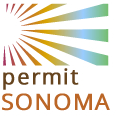- Accessory Units and Junior Units
- Agricultural Uses
- Agricultural Zoning Ordinance
- Cannabis Program
- County Code for Permit Sonoma
- Housing Urgency Ordinances
- Renewable Energy
- Septic Regulations
- Universal Design
- Water Efficient Landscape Ordinance
-
- Winery Events Calendar
- General Noise Standards
- Winery Use Permit Application Process
- Application Fees
- Required Site Specific Studies for Wineries
- Private Guest Accommodations
- Examples of Winery Project Descriptions and Conditions of Approval
- Areas of Local Concentration
- Draft Guidelines Dry Creek Valley
- Traffic Studies
- Use Permit Application Forms
- Document and Map Listings
- Z Accessory Dwelling Unit Exclusion Removal
- Back to Renewable Energy
Accessory Renewable Energy Systems

Purpose
The Zoning Code allows accessory renewable energy systems as permitted uses countywide, subject to general development standards. Accessory renewable energy systems may utilize wind, bioenergy, solar, low-temperature geothermal, or a combination of these systems, to meet the energy demands of the uses on the property.
Applicability
Accessory Renewable Energy Systems are defined as: An on-site renewable energy system, including but not limited to wind, bioenergy, solar, low-temperature geothermal heating systems, geothermal heat pump systems, and fuel cells and combinations thereof, where the energy generated is used primarily to meet the energy demands of the lawful use on the property where the system is located. Accessory renewable energy systems are subject to the applicable general development standards set forth in 26.88.200 A.
Permit Requirements
Accessory renewable energy systems are allowed as a permitted use subject to the development standards (often referred to as “by-right”). A planning clearance and a building permit are all that is required to ensure compliance with the site planning and development standards set forth in 26.88.200. An accessory renewable energy system is one designed to provide up to 125% of the power used on site. An exception to the 125% thresholds is made for any roof-mounted wind, bioenergy or solar system or facility on legally-established structures or over required parking.
Development Standards
- Building Permit and Planning Clearance (sign-off) required. Fire clearance may be required
- Accessory Renewable Energy System may generate up to 125% of electrical power demand on site
- Roof-mounted facilities and facilities over required parking areas may generate more than 125%, subject to a Zoning Permit. Bioenergy systems using feedstocks that are a by-product of on-site agricultural processing may also produce more than 125% if they are located within an existing structure or existing developed area of the site, as determined by the Director.
- Accessory Renewable Energy System input must come from the site (sun, biomass, wind, etc.) and may not be imported to the site unless a Use Permit is obtained
- Accessory Renewable Energy Systems may not be installed in advance of the primary use(s) on the site, but may be installed concurrently.
- Site Planning and General Development Standards apply (26.88.200)

 Translate
Translate